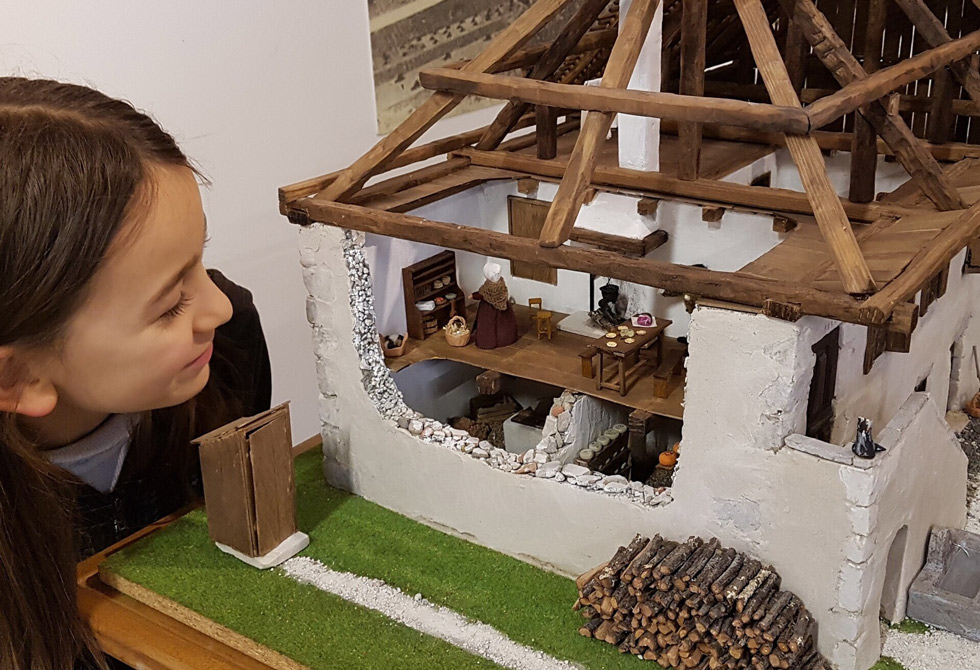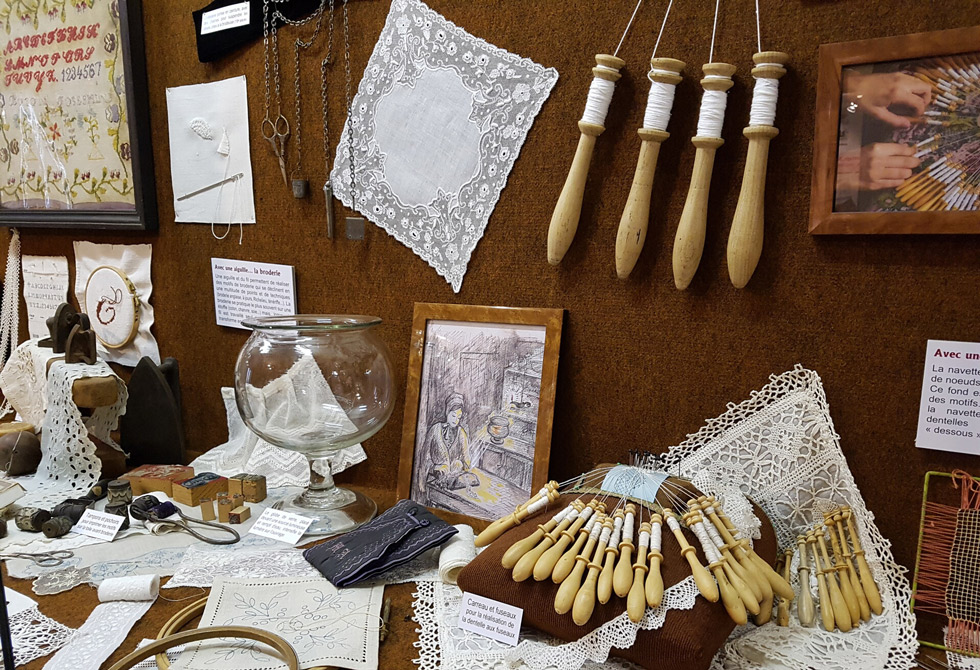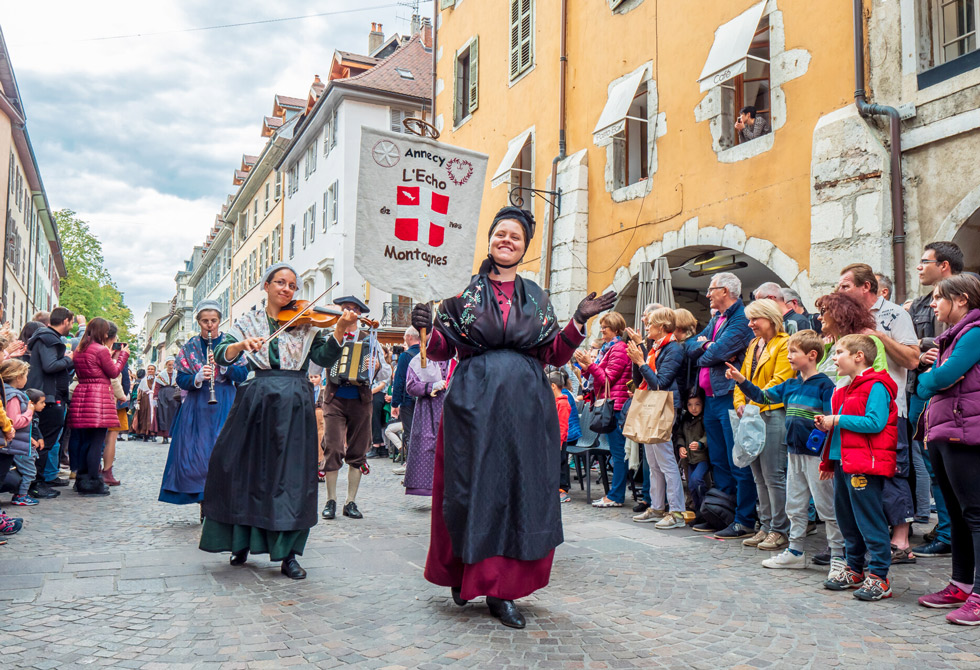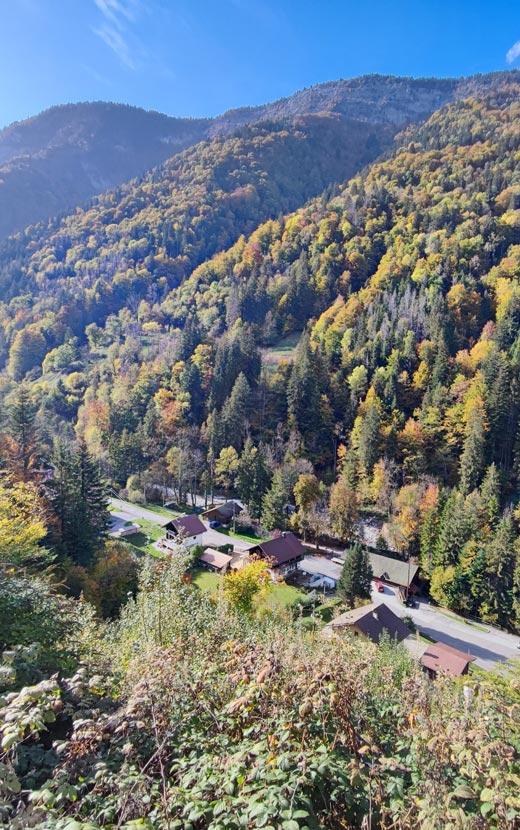
Family
Lake Annecy Ecomuseum
A trip from past to presentA few days before reopening for the summer season – the museum opens from May to September – we set foot inside the Lake Annecy Ecomuseum in Sevrier. Its location along the lake, right next to the port, the beach, and the bike path, in with the area’s incredibly beautiful mountains all around, is well worth the trip in and of itself.
This non-profit museum, created in 1992 by Echo des Nos Montagnes, a local folk dancing group based in Annecy, proves full of surprises. It is operated by a large group of enthusiastic and rather ingenious volunteers – especially when it comes to creating fun and educational props and displays. The two-story museum’s original and vibrant scenography tells the history and portrays the daily lives of Savoyards living along the shores of Lake Annecy from the 18th century through the beginning of the 20th century.

© Ecomusée du Lac d'Annecy / The Ecomuseum Building
Passeur de mémoire
The Lake Annecy Ecomuseum was designed as captivating adventure to keep the area’s collective memory alive. Sharing and passing down are foundational concepts, and this journey through 19th century Savoie is fun and interactive, offering a truly unique way to learn about little known aspects as well as major events in the region’s history.
The tour is geared towards families, with dedicated activities for kids as young as three years old, and designed for multiple generations to interact together. A fantastic model of a farm provides an example of a traditional homestead, and explains the different roles the lake played from one era to another. Visitors get to observe, touch, and participate through a variety of interactive games and exhibits all throughout the tour.

© Ecomusée du Lac d'Annecy / Model of a farm
The museum focuses a lot on the history of clothing. The cut, material (crude or more extravagant), color, detailing, accessories, and the accompanying coif say a lot about the era, social status, and lifestyle of our ancestors.
Considered object of value to keep for an entire lifetime, and often passed down from generation to generation, people repaired and mended their clothing to make it last as long as possible. While today we refer to this process as “upcycling,” at the time they referred to it as “common sense.” In addition, clothes were stored in an attic or shed that served as a safe, built separate from the main house to protect and preserve the family’s valuables in the event of a fire.

© Ecomusée du Lac d'Annecy / The history of clothing
The antique artifacts on display, the skills from yesteryear (knitting, crochet, spinning, weaving, woodworking), and short films written, directed, and played by volunteers (clearly quite versatile with a wide variety of skills), paint a picture people’s daily lives at the time, planned around working the fields, festivals, evening gatherings, games, dances, and singing.
The museum explains that every winter, people had to leave the mountains since the ever-dwindling family resources were not enough to feed everyone. During the few months spent in the city, people worked as door-to-door salesmen, chimney sweeps, shoe shiners, marmot tamers, housekeepers, and even coachmen.

© Ecomusée du Lac d'Annecy / Useful skills and tools from the past
To keep the museum animated, the forty or so volunteers in the folk dancing group, with help from a few other generous souls working backstage, put on shows dressed in garb from yesteryear, teach workshops, and organize guided tours for school kids.
The museum is mentioned as a favorite in the Hachette “Guide Bleu” guidebook series, and also received an award from Guide du Routard guidebooks.

© Ecomusée du Lac d'Annecy / A show in historic dress
Echo de nos Montagnes
It all started in 1952, when a handful of Savoyards living in Paris founded a folk dancing group to keep their ancestral traditions alive: clothing, songs, dances, and music from their birthplace.
Once back home, they established the headquarters for Echo de Nos Montagnes in Annecy, and continued their mission to collect artifacts and visit the surrounding villages to learn about local history.
The non-profit gathered first-hand accounts, poured over local archives, and saved artifacts and know-how from being destroyed and forgotten.
The founding members’ enthusiasm has endured, carried on by a multi-generational group of volunteers (from 7 to 88 years old) in France and abroad.

© Ecomusée du Lac d'Annecy / Echo de Nos Montagnes during the fall livestock parade
Ecomusée du Lac d’Annecy / Lake Annecy Ecomuseum
Route de l’Eglise – SEVRIER
Tél. +33 (0)4 50 52 41 05
Pricing 2023
Adult: €6.50 – Child (3-17 years old): €4.50
Family (2 adults + 2 children): €20
Another story
Copyright:
- © Ecomusée du Lac d’Annecy
Journalist: Aude Pollet-Thiollier
Translation: Darin Reisman
